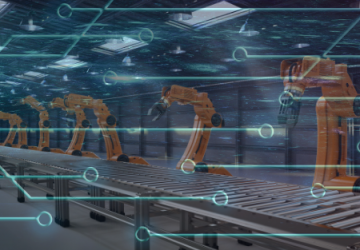Advancing systems engineering in a data centric world

Never enough data
We live in an unprecedently data rich environment. We get our steps and heart rate from our watches, our bikes can record the distance, speed and inclines endured on a weekend ride, even smart phone happy snaps are no longer just a photo, they give us the time, location and who’s in the photo. At home our vacuum cleaners can now ‘understand’ our houses and use all that information to optimise its performance and a doorbell can now monitor who’s coming and out of your house.
Whether we realise it or not data is everywhere.
Utilising data effectively in engineering
The digital transition has well and truly begun in engineering and is only increasing. The desire for information is accelerating, not only in regard to how we engineer systems but also within the systems we deliver. Starting with CAD and BIM and simulations right through to today’s Model Based System Engineering, the digital transformation is happening.
Whether it’s in the systems we engineer or the engineering that we undertake as systems engineers we are now immersed in and reliant on data.
This data rich environment, and or ability to utilise it, has greatly enhanced the functionality in the systems that we engineer and how we engineer those systems. Perhaps this is most obvious and significant change is that of the application of machine learning and artificial intelligence, now and into the future.
In autonomous vehicles for instance these machine learning techniques are producing faster and more accurate results in terms of autopilot, steering, breaking, and decision making.
This of course has happened for many years – our cars have given us a warning when our tyre pressure was too low for instance. What’s different now is that there is a continuous and powerful process of data flow back to the engineering world, which feeds back into the design process.
Without data none of this is possible.
Digital engineering enabling pinpoint accuracy in traceability but what next?
Systems engineers can now trace the thread of a decision made during production or construction through the digital model all the way back to the original requirement.
The next opportunity for systems engineering though is to embrace artificial intelligence and machine learning. AI and ML will be at the core of how we provide this. Two key enablers will be having a greater understanding of and being able to deal with the data and information within digital engineering. We can give the end users of the systems we help to build real value and greater functionality out of their devises.
Proving and assuring for the unknown
There will be challenges. For autonomous cars for example it has, to date, been safety related. We’ve all seen these autopilot based crashes in the US. What has been revealed is that AI does sometimes go wrong and it’s generally a new and unforeseen situation. The system has failed, and combined with the driver not paying enough attention, results in crashes. The car had been trained but not for the unforeseen situations. The challenge for us as a systems engineers is to start to think about these issues. How do we start to prove and assure these systems but also how do we actually gather the data that will help the machine learning system actually learn? We need to understand the training and testing or the training and validation of these systems.
As an example, one major autonomous vehicle company based in the US has conduction over five billion hours of testing, and verification and validation of their AI algorithms. They’ve set up a unique system in a digital engineering world where they design an algorithm and deploy to the car. It doesn’t actually control the car, but they test that algorithm constantly, over many millions of hours and many different vehicles in many different environments, until they were satisfied with the results. Then it was deployed and now it can control the car. This requires a digital engineering environment with a purpose-built supercomputer, bespoke communication technology and training environments. Now they are building synthetic environments to speed up the training of the algorithms.
Systems engineering has to embrace Artificial Intelligence to keep up
The future is digitally enabled, and our world is only going to become more data centric. Those smart devices that are engulfing the world, whether it’s cars or phones, doorbells, or vacuum cleaners, present a world of opportunity to optimally engineer the systems and make sure it’s safe and delivers value.
It’s not just about that digital infrastructure in the digital way of doing business, it’s about the capabilities that systems engineers need. We’re going to be challenged by a whole new set of skill sets, particularly around modelling and simulation and data analysis.
Systems engineering needs to start to specify how the training sets will be developed, how we understand whether a machine learning algorithm is working or not, and so on. Taking this data centric and modelling approach will be one of the biggest challenges for the discipline moving forward but a vital one.
Author: Chief Engineer, Kevin Robinson




